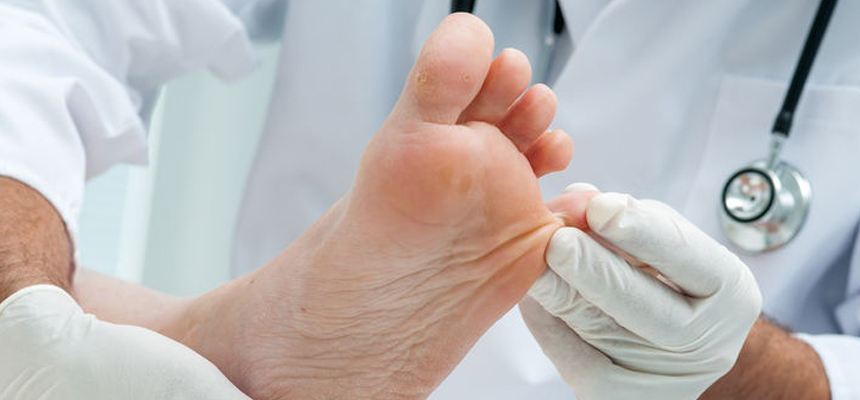SPECIAL ATTENTION TO FOOT CARE FOR DIABETIC PATIENTS

High blood sugar contributes to poor blood circulation. It can also damage nerves in your feet, a condition called neuropathy. Neuropathy can cause you to lose sensation in your feet, which may make it difficult for you to realize if you have cut yourself or injured your foot. If you leave a cut untreated, it can lead to an infection. Poor circulation can make it difficult to heal cuts and infections. Poorly controlled blood sugar can damage many parts of the body, including the nerves and vessels that go to the feet. Because of this, people with diabetes have an increased risk of developing foot problems.
Dr. Pradeep Gadge, leading Diabetologist, Gadge Diabetes Centre,gives an extensive account on how foot injuries can be prevented by paying proper attention to foot care, and by wearing proper Diabetic footwear.
.jpg) Finding a good shoe is important if you have diabetes. Below are some tips:
Finding a good shoe is important if you have diabetes. Below are some tips:
• Look for a lightweight shoe that lets your feet move and breathe.
• Choose a flexible material, such as leather, canvas, or suede.
• Remember that a good diabetic shoe should have a shock-absorbing sole, which will help relieve pressure on the bottom of your foot.
• Pick shoes with laces that you can loosen or tighten. This makes it easier to accommodate any swelling or changes in your feet over time.
• Keep in mind that the shoe should also have a solid back to provide extra support.
People with diabetes should avoid wearing certain types of shoes:
• Avoid any shoe with a pointed toe because it will aggravate your toes and restrict circulation.
• Don’t wear shoes without arch support, as they may lead to the breakdown of tissue in your foot.
• Be careful to avoid shoes that don’t fit properly, as those could injure your feet.
• Wear high heels sparingly if at all. If you do wear high heels, round-toe styles with heels below 2 inches are best.
• Diabetic socks are socks aimed at people with diabetes. Quite often, diabetic socks are designed without seams in order to reduce the chance of blistering. They are designed to control moisture, in order to reduce the risk of fungal infection, or with cushioning to prevent foot ulcers.
To avoid serious foot problems that could result in losing a toe, foot or leg, follow these guidelines:
• Check your feet and toes, inspecting the tops, sides, soles, heels, and the area in between the toes daily before going to bed.
• Wash your feet every day in warm water with mild soap. Hot water and harsh soaps can damage your skin. Check the water temperature with your fingers or elbow before putting your feet in.
• Pat your feet to dry them and make sure to dry well. Infections tend to develop in moist areas, so make sure you dry the area between your toes well.
• Avoid walking barefoot. Most people avoid hot pavements or sandy beaches, but even walking barefoot around the house can cause sores or injuries that can get infected.
• Protect your feet from heat and cold.
• Never attempt to remove corns, calluses, warts, or other foot lesions yourself. Don’t use chemical wart removers, razor blades, corn plasters, or liquid corn or callus removers. See your doctor or podiatrist.
• Trim your toenails after washing your feet when your nails are soft.
• Use a moisturizer daily to keep dry skin from itching or cracking. But don't moisturize between the toes, as that could encourage a fungal infection.
Book Appointement: Dr. Pradeep Gadge, leading Diabetologist, Gadge Diabetes Centre

 Disclaimer: Welthi.com does not guarantee any specific results as a result of the procedures mentioned here, and the results may vary from person to person.
Disclaimer: Welthi.com does not guarantee any specific results as a result of the procedures mentioned here, and the results may vary from person to person.









